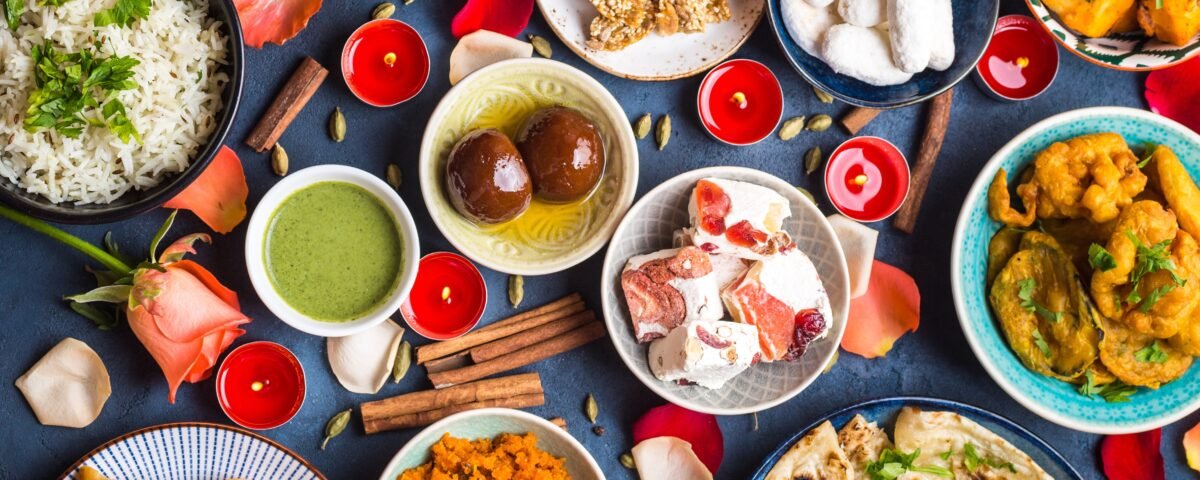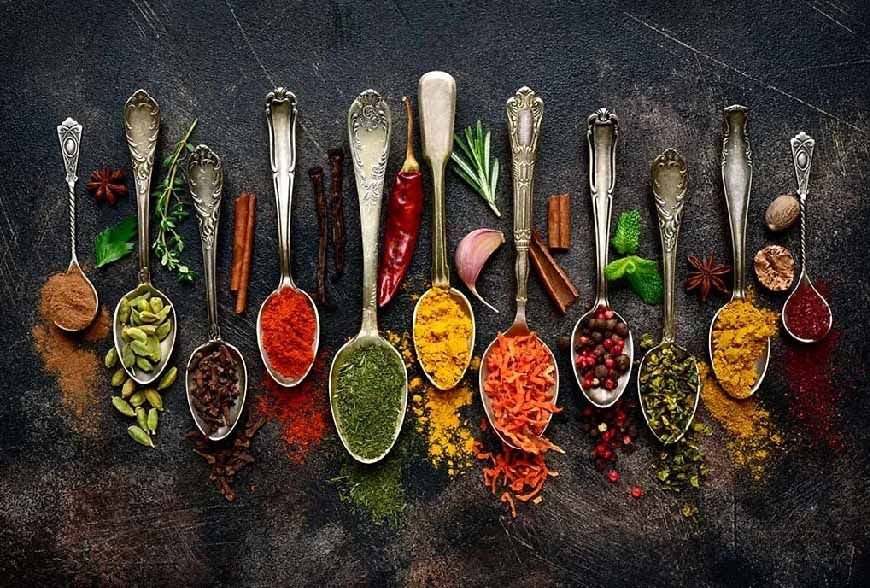Top 10 Must-Try Traditional Indian Foods

What Spices Make Indian Food So Flavourful? Find Out Here
June 5, 2025India is a land of vibrant colours, diverse cultures, and an unparalleled culinary heritage. The rich tapestry of flavours found in traditional Indian food tells the story of its vast history and cultural diversity. From North to South, East to West, every region offers a unique gastronomic experience. Whether you’re a seasoned food enthusiast or a curious traveller, exploring the different foods of India is a sensory journey worth taking. This blog introduces you to the top 10 must-try traditional Indian foods, delving into their origins, preparation, and the regions that have mastered them.
1. Naan – The Quintessential Indian Bread
Naan is a soft, leavened flatbread baked in a tandoor (clay oven) and often served with rich gravies. Its origins trace back to the Indian subcontinent during the Mughal era. A staple in North Indian cuisine, naan comes in several varieties – butter naan, garlic naan, stuffed naan, and even cheese naan. It is widely enjoyed across the country but is particularly popular in Punjab and Delhi. It’s best paired with creamy dishes like korma or spicy curries like Karaikudi. Naan is not just a side—it enhances the overall experience of any traditional Indian food platter.
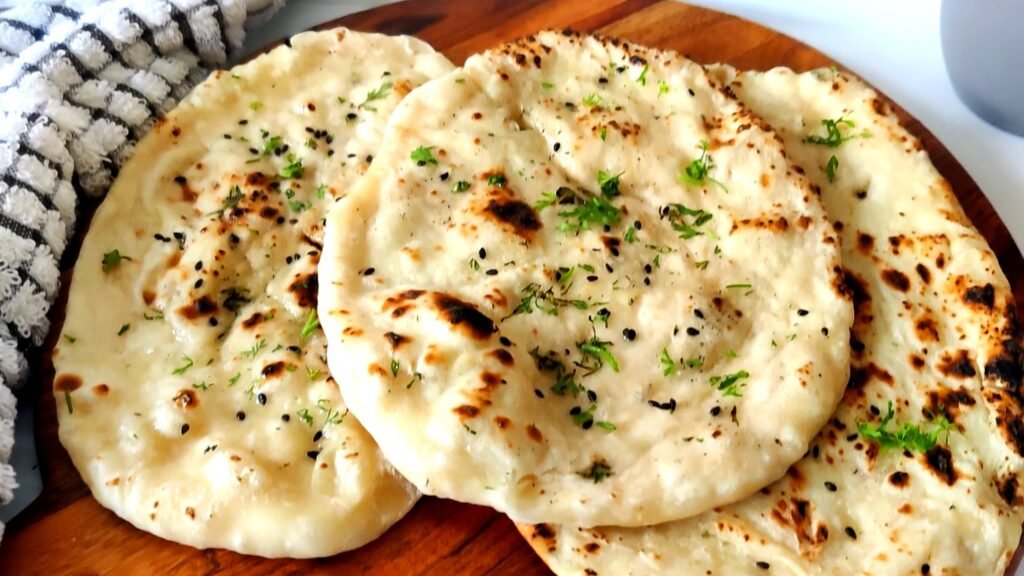
2. Samosas – The Perfect Indian Snack
Samosas are triangular pastries filled with a savoury mixture of potatoes, peas, spices, and sometimes meat. Deep-fried to golden perfection, they are a common sight in Indian street food culture. This snack has Persian roots but has become one of the most famous Indian food items. In places like Uttar Pradesh and Delhi, samosas are often served with tangy tamarind chutney or spicy green chutney. Their crispy outer layer and flavourful filling make them an ideal introduction to Indian cuisine for newcomers.
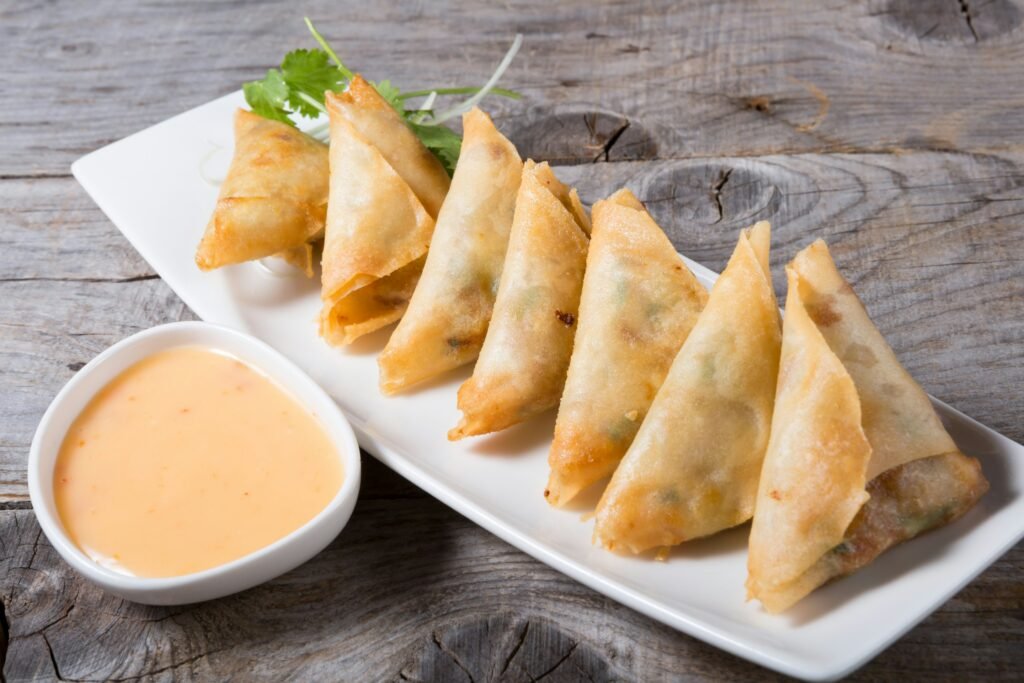
3. Kathi Rolls – Kolkata’s Street Food Pride
Originating from Kolkata, Kathi Rolls are a modern evolution of Indian wraps. Initially made with skewer-roasted kebabs rolled in parathas, today’s Kathi Rolls include vegetarian and non-vegetarian versions. They are often stuffed with paneer, chicken, or egg, combined with spicy sauces and onions. As one of the most popular foods in India, Kathi Rolls are found in every major city. They exemplify how Indian food continually adapts while preserving traditional flavours. Try them in Kolkata’s Park Street for the most authentic experience.
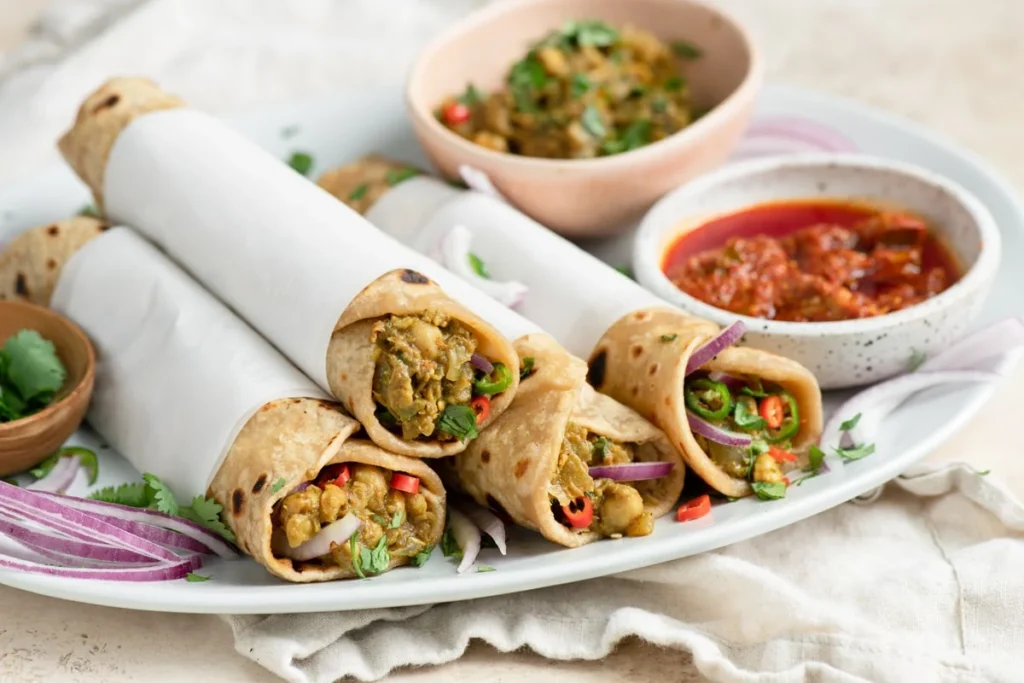
4. Pakora – India’s Favorite Tea-Time Snack
Pakoras are spiced fritters made by deep-frying vegetables or meat coated in gram flour batter. They are a favourite during monsoons and are typically served with hot masala chai. Variants include onion pakora, potato pakora, and paneer pakora. Popular across the entire country, especially in states like Rajasthan and Maharashtra, pakoras are another hallmark of traditional Indian food. Whether at a roadside stall or a high-end restaurant, pakoras remain a timeless part of Indian cuisine.
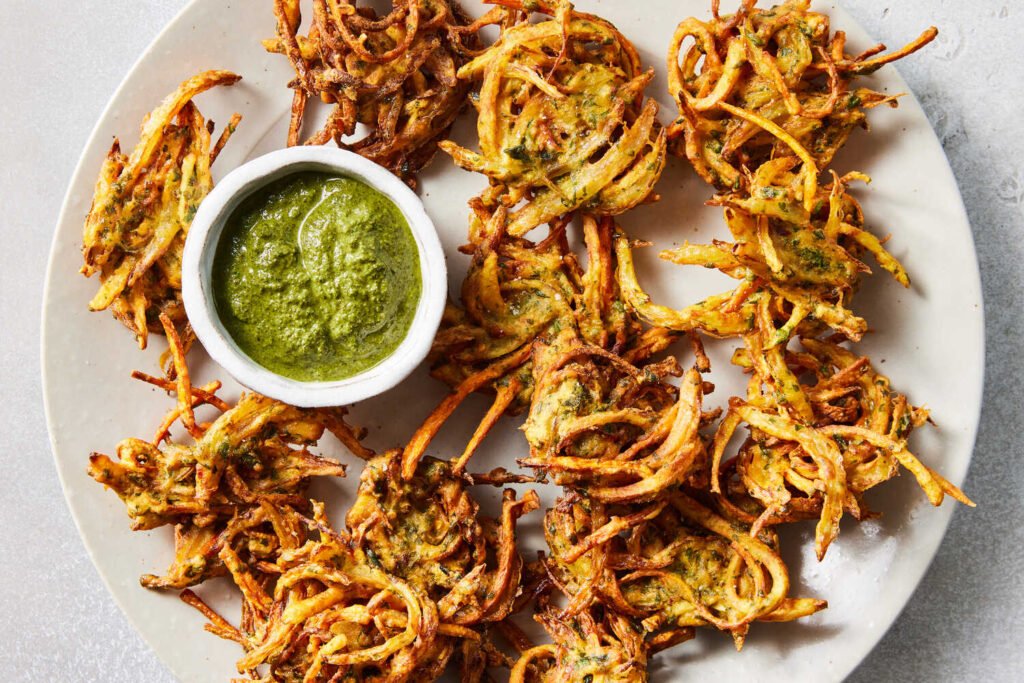
5. Korma – A Mughal Legacy of Creamy Richness
Korma is a luxurious curry made with yoghurt, cream, nut paste, and a blend of aromatic spices. It has deep Mughal roots and is a shining star in North Indian culinary traditions. The dish can be vegetarian or non-vegetarian, featuring ingredients like chicken, mutton, or paneer. In Lucknow and Hyderabad, Korma holds a special place on festive menus. This dish epitomises the royal essence of traditional Indian food and is frequently listed among the best Indian food choices for its depth of flavour and creamy consistency.
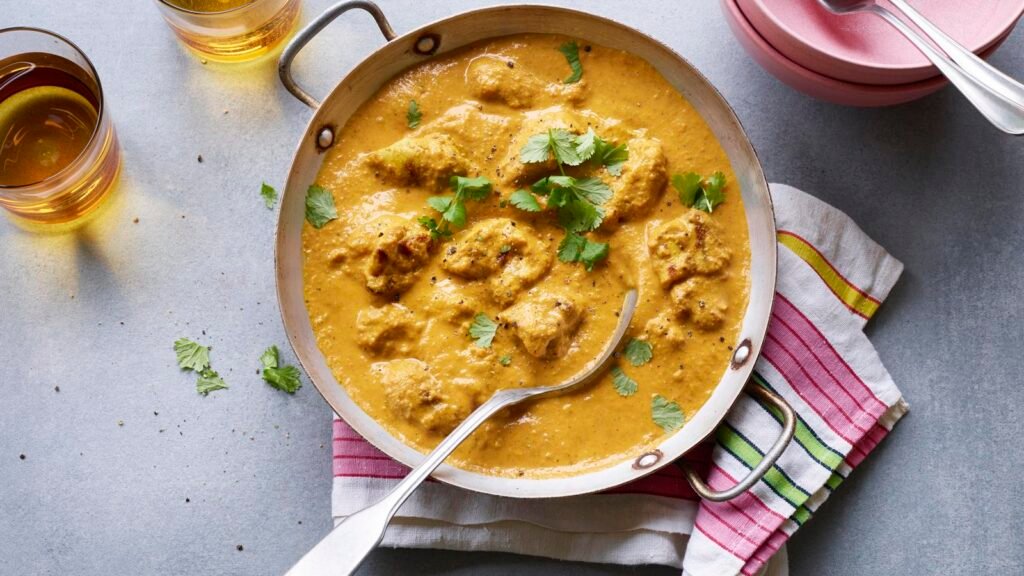
6. Malai Kofta – The Vegetarian Delight
Malai Kofta is a rich, creamy dish made with deep-fried dumplings of mashed vegetables and paneer, soaked in a tomato-cream gravy. Popular in North Indian cuisine, especially in Delhi and Punjab, it’s a vegetarian alternative to meat-based gravies. Malai Kofta is often served during special occasions and festivals. Its name literally translates to ‘cream balls’, and the taste lives up to the name. As one of the most popular foods in India, it is revered by vegetarians across the country and is a staple in many wedding feasts.
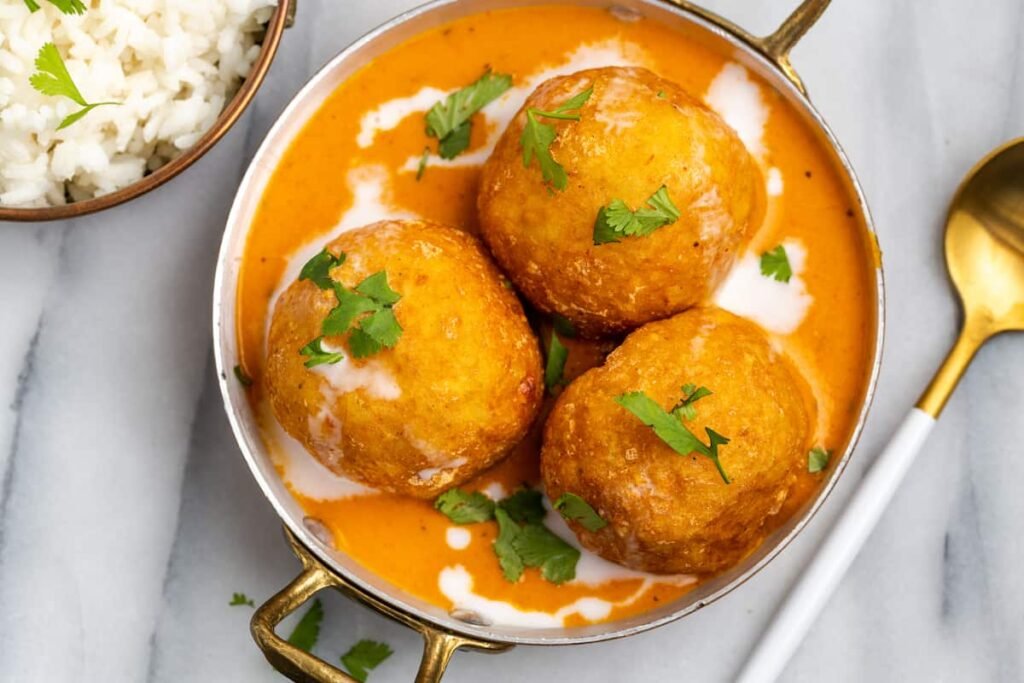
7. Karaikudi Curry – South India’s Spicy Treasure
Karaikudi Curry hails from the Chettinad region of Tamil Nadu, particularly Karaikudi, known for its bold and spicy dishes. This curry is made with a distinct blend of spices, including star anise, fennel, pepper, and dried red chillies. Typically cooked with chicken or mutton, Karaikudi Curry is a must-try for those who love fiery, flavourful dishes. It’s a shining example of the different foods of India, showcasing how South Indian food contrasts with the milder flavours of the North. This curry is highly recommended for those exploring Indian cuisine beyond the mainstream.

8. Dal Tadka – A Simple Yet Iconic Dish
Dal Tadka is a North Indian dish made from yellow lentils (usually toor or moong dal) cooked and tempered with ghee, garlic, cumin seeds, and red chillies. While seemingly simple, it carries deep flavours and aromatic richness. Found in nearly every Indian household and restaurant, it represents the soul of traditional Indian food. Particularly famous in Punjab and Uttar Pradesh, Dal Tadka is often enjoyed with rice or roti. It is undoubtedly among the most popular foods in India, comforting to both locals and travellers.
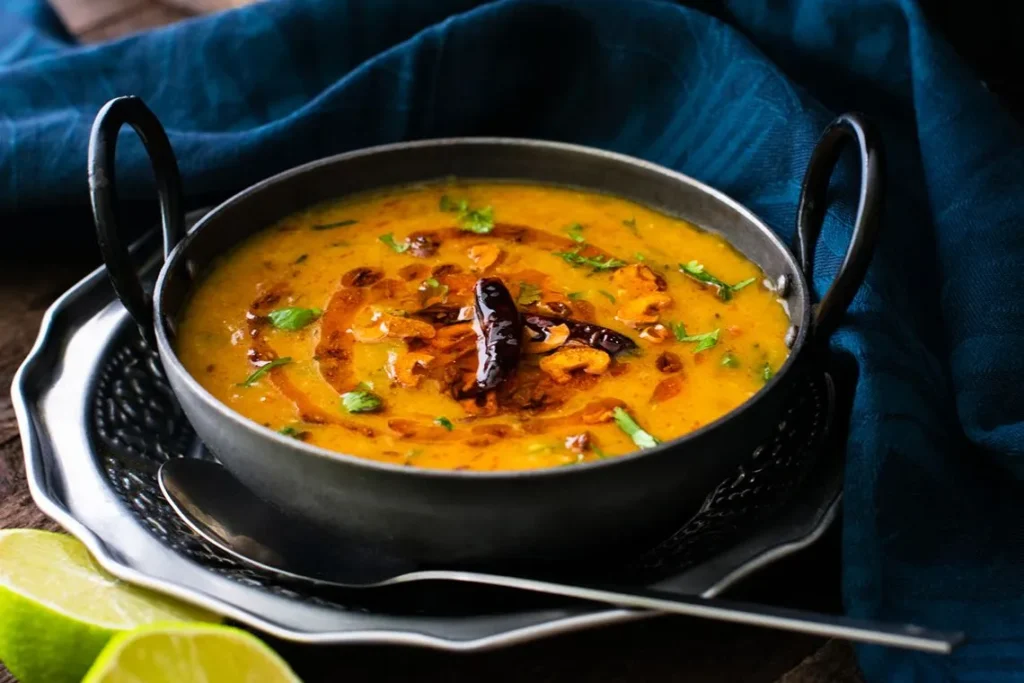
9. Biryani – The Royal Rice Dish of India
Biryani is an aromatic rice dish layered with marinated meat, saffron, and spices. With roots in Mughal and Persian cuisine, biryani has evolved into regional specialities like Hyderabadi biryani, Lucknowi biryani, and Kolkata biryani. Each region brings its own twist, but the result is always a fragrant, flavourful, and satisfying meal. It’s considered one of the best Indian food offerings, admired by locals and foreigners alike. Hyderabad is considered the epicentre for the most authentic biryani experience. This dish is often listed as the most popular food in India.
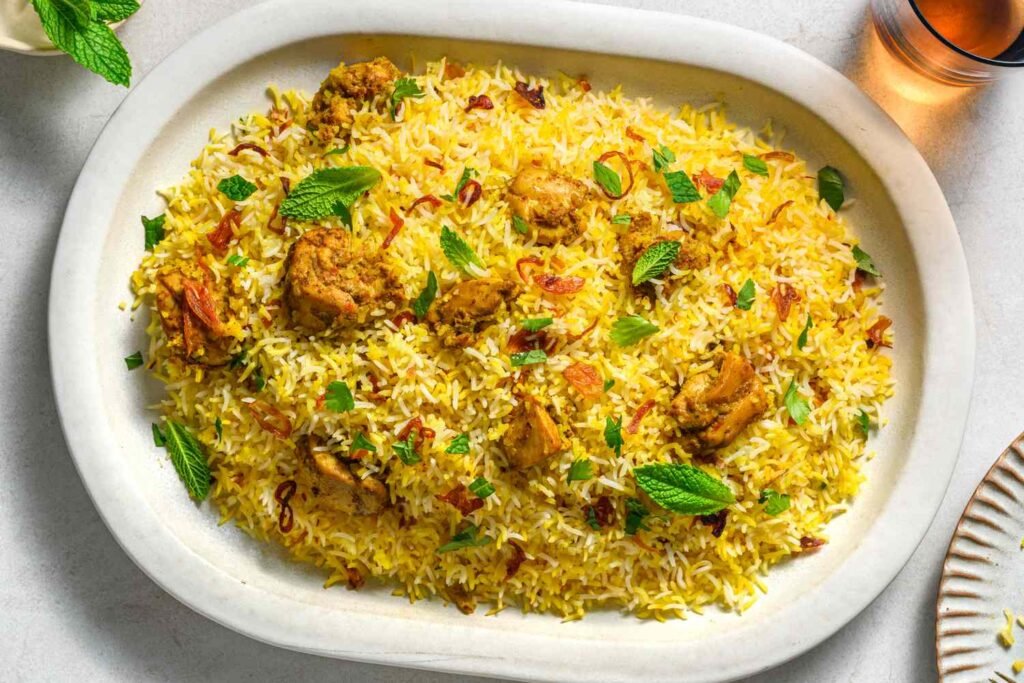
10. Kheer – The Sweet Finale
Kheer is a creamy rice pudding made by simmering rice, milk, and sugar, often flavoured with cardamom and saffron and garnished with nuts. It is one of the oldest and most traditional Indian food desserts, found in every part of the country from Kashmir to Kerala. In temples and homes alike, kheer is made as an offering and festive treat. Bengal’s payesh and South India’s pal payasam are regional variants. Its comforting sweetness and aromatic richness make it a fitting conclusion to any Indian cuisine experience.

Conclusion
Exploring traditional Indian food is like navigating through a maze of Indian spices for food, textures, and regional flair. From the crispy samosas of the North to the fiery Karaikudi curry of the South, the diversity in Indian cuisine is unmatched. Each of the ten dishes discussed above holds a special place in India’s culinary heritage. Whether it’s the royal richness of biryani or the humble warmth of dal tadka, these dishes reflect the variety of different foods of India. Their popularity isn’t just limited to India – many are globally recognised as the most popular food in India and often rank high on lists of the best Indian food worldwide.
These ten choices also represent what is commonly known as famous Indian food. Restaurants around the world now serve these classics, but there’s nothing like enjoying them in their region of origin. Whether you’re dining in the bustling streets of Delhi, the royal kitchens of Lucknow, or the spice-laden markets of Chennai, you’re sure to find a flavour that captivates your senses. Each bite introduces you to a new aspect of Indian culture, history, and tradition.
In conclusion, sampling the best Indian food isn’t just about satisfying your palate—it’s about experiencing a piece of India itself. For travellers seeking a more immersive experience, joining one of the best food & culinary tours in India offers an exceptional opportunity to explore regional specialities, cooking techniques, and the stories behind these dishes. So, the next time you find yourself in an Indian restaurant or visiting India, make sure to try these ten iconic dishes. You won’t just be tasting food; you’ll be savouring centuries of tradition and cultural richness that only traditional Indian food can offer.

